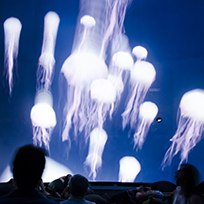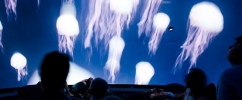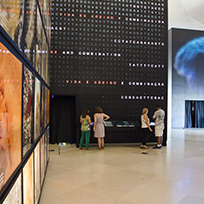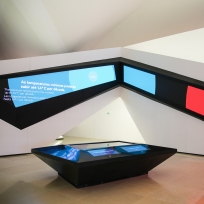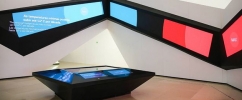Us
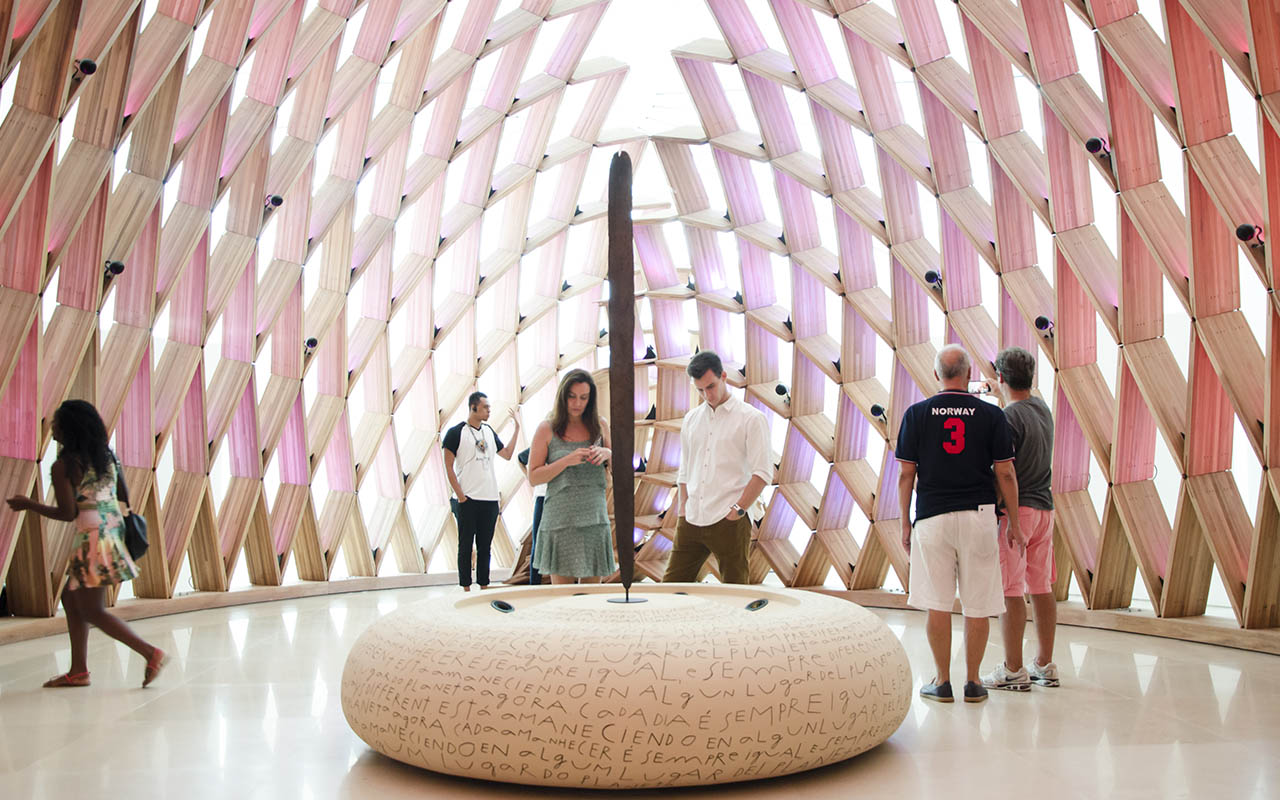
The area called Us, the last part of the Main Exhibition, features a light and sound display. The setting is based on an “oca”, an indigenous house of knowledge, where the elders share cultural information and wisdom with younger generations. The “tjurunga”, an object used by Australian aborigines to symbolize the passing on of knowledge, is central to this area. It is among the most ancient artefacts ever created and is the only physical object in the main exhibit.
The wooden longhouse is lit by over 1,000 bulbs, which turn on and off and change color (with shades reminiscent of the sunrise and sunset) in synch with soft music. This sensory experience was designed by architect Mônica Lobo, designer Muti Randolph and composer Lucas Marcier. The exhibit aims to communicate the notion that it is always tomorrow since the sun is always rising somewhere in the world, and each dawn is different because every day is a new day. “The lights make the structure pulse,” explains Ms. Lobo, who also designed the lighting for the rest of the museum.
General director of the Roberto Marinho Foundation, Hugo Barreto, sees the “tjurunga” as a symbol of the museum itself. Like the museum, its shape is elongated and it transmits knowledge. Mr. Barreto explains, “The exhibits are our “inscriptions” in the museum, which help visitors understand the connection between the past and the future.” At the end of the exhibition visitors take in the view of the Guanabara Bay from a belvedere and return to today with, the museum hopes, new perspectives on the world.
